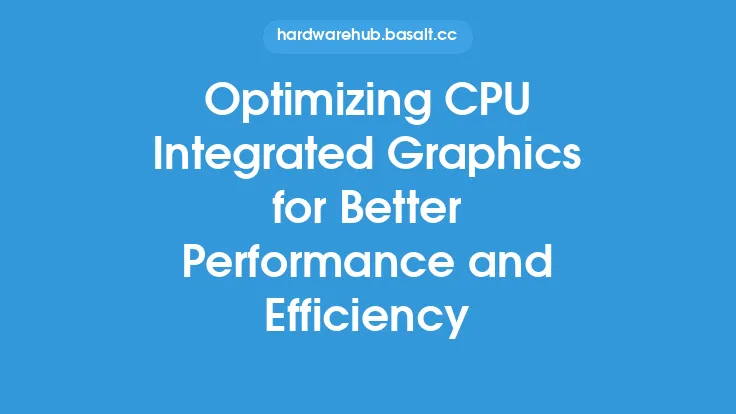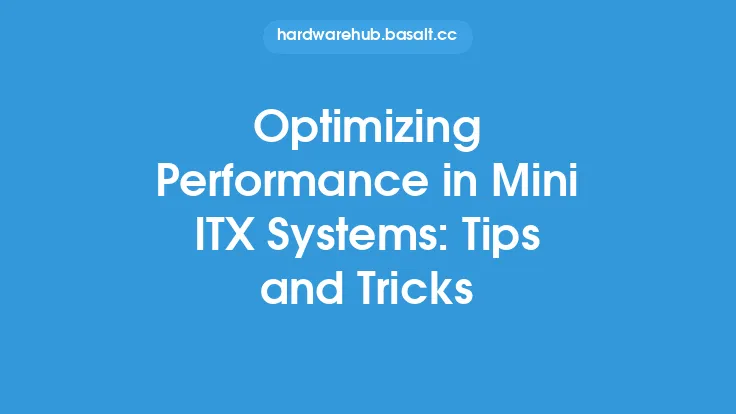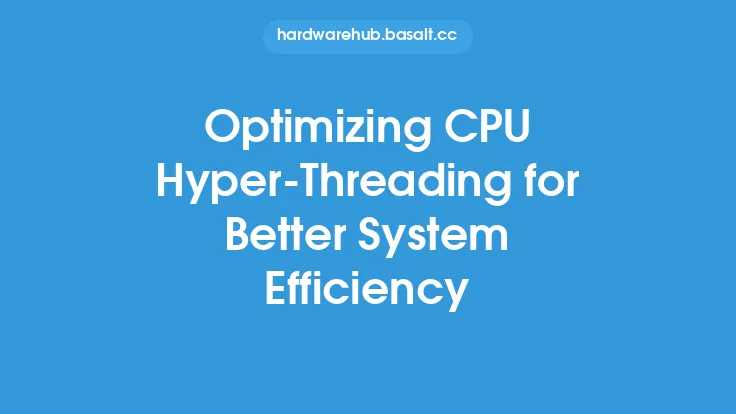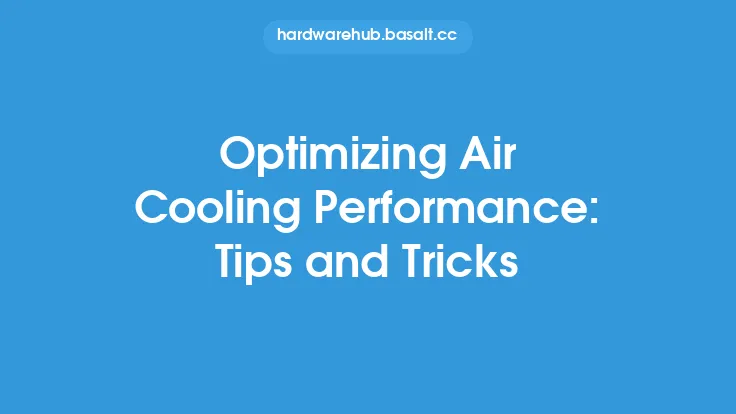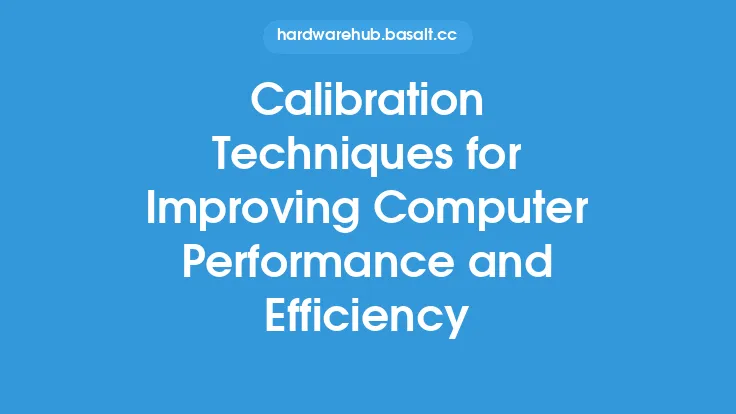When it comes to optimizing CPU efficiency, one crucial aspect to focus on is cache performance. The cache is a small, fast memory location that stores frequently-used data and instructions, allowing the CPU to access them quickly and efficiently. However, as the amount of data and instructions increases, cache performance can become a bottleneck, leading to decreased CPU efficiency. In this article, we will explore various tips and tricks to optimize cache performance, ensuring better CPU efficiency.
Understanding Cache Optimization
Cache optimization is the process of improving the performance of the cache by reducing the number of cache misses, which occur when the CPU cannot find the required data or instructions in the cache. There are several techniques to optimize cache performance, including cache-friendly data structures, loop optimization, and data prefetching. By understanding how the cache works and using these techniques, developers can significantly improve the performance of their applications.
Cache-Friendly Data Structures
One of the most effective ways to optimize cache performance is to use cache-friendly data structures. A cache-friendly data structure is one that is designed to minimize cache misses by storing related data in contiguous locations. For example, arrays are cache-friendly data structures because they store elements in contiguous locations, making it easy for the CPU to access them. On the other hand, linked lists are not cache-friendly because they store elements in non-contiguous locations, leading to more cache misses.
Loop Optimization
Loop optimization is another technique used to optimize cache performance. Loops are a common source of cache misses because they often access large amounts of data. By optimizing loops to reduce the number of cache misses, developers can significantly improve the performance of their applications. One technique used to optimize loops is loop unrolling, which involves increasing the number of iterations in a loop to reduce the number of cache misses. Another technique is loop fusion, which involves combining multiple loops into a single loop to reduce the number of cache misses.
Data Prefetching
Data prefetching is a technique used to optimize cache performance by preloading data into the cache before it is needed. This technique is particularly useful in applications that access large amounts of data. By preloading data into the cache, developers can reduce the number of cache misses, leading to improved performance. There are several types of data prefetching, including software prefetching and hardware prefetching. Software prefetching involves using software instructions to preload data into the cache, while hardware prefetching involves using hardware mechanisms to preload data into the cache.
Cache Blocking
Cache blocking is a technique used to optimize cache performance by dividing large datasets into smaller blocks that fit within the cache. This technique is particularly useful in applications that access large amounts of data. By dividing the data into smaller blocks, developers can reduce the number of cache misses, leading to improved performance. Cache blocking is commonly used in matrix operations, such as matrix multiplication, where large amounts of data need to be accessed.
Minimizing False Sharing
False sharing occurs when multiple threads access different variables that are stored in the same cache line. This can lead to cache coherence issues, where the cache lines are constantly being updated, leading to decreased performance. To minimize false sharing, developers can use techniques such as padding, which involves adding extra bytes to the data structure to ensure that each variable is stored in a separate cache line.
Using Cache-Aware Algorithms
Cache-aware algorithms are designed to take into account the cache hierarchy and optimize performance accordingly. These algorithms are particularly useful in applications that access large amounts of data. By using cache-aware algorithms, developers can reduce the number of cache misses, leading to improved performance. Examples of cache-aware algorithms include cache-aware sorting algorithms and cache-aware search algorithms.
Measuring Cache Performance
Measuring cache performance is crucial to optimizing cache performance. There are several tools available to measure cache performance, including hardware counters and software profilers. Hardware counters provide detailed information about cache misses, cache hits, and other cache-related events. Software profilers provide information about the performance of applications and can help identify cache-related bottlenecks.
Conclusion
Optimizing cache performance is crucial to improving CPU efficiency. By using techniques such as cache-friendly data structures, loop optimization, data prefetching, cache blocking, minimizing false sharing, and using cache-aware algorithms, developers can significantly improve the performance of their applications. Additionally, measuring cache performance using tools such as hardware counters and software profilers can help identify cache-related bottlenecks and optimize performance accordingly. By following these tips and tricks, developers can optimize cache performance, leading to better CPU efficiency and improved overall system performance.
